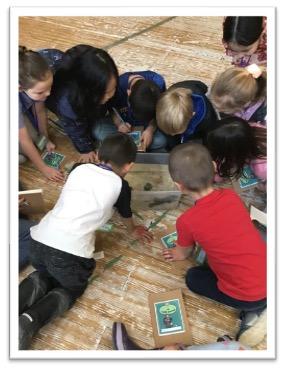Body
Image

Molly Community Science: Supporting Science Exploration and Environmental Identity Development with PBS KIDS’ Molly of Denali
Molly Community Science aims to support science exploration and environmental identity development among 6- to 8-year-old children from rural Alaska Native communities. The project has two goals: (1) to learn more about how children develop environmental identity (which we define as the empathy, knowledge, and skills needed to act responsibly for the environment); and (2) to co-design, with three Alaska Native villages, an intergenerational, community-based science program that nurtures children’s environmental identity. The project builds on Molly of Denali, a national, animated PBS KIDS series that features an Alaska Native lead character; involves Alaska Native people at every level of production; and teaches literacy, social studies, Alaska Native values, and environmental science. Media producers at GBH (Boston’s PBS station) are facilitating the development of the program, including the implementation model, curriculum, and supporting media and technology. Researchers at South Dakota State University and University of Alaska Southeast are investigating how children experience their place, and how the new community science program can contribute to environmental identity development. Educators at Association of Interior Native Educators are working with GBH to facilitate the creation of the community science program, including guiding our co-design work with three partner communities: Bethel, Hoonah, and Northway. Goldstream Group is serving as process evaluator.
Pillar 1: Innovative Use of Technologies in Learning and Teaching
In rural Alaska, cutting-edge media technologies can be expensive and challenging to implement without reliable internet access. Instead, our project incorporates innovative uses of more established media. We are creating Molly of Denali animations that show characters exploring nature using observation tools like field journals and hand lenses; live-action video that highlights scientists and Elders working together to care for the environment; and a mobile app that helps children illustrate and narrate their learning.
Pillar 2: Partnerships for Career and Workforce Preparation.
Informed by research findings, our project is working closely with three rural Alaska Native communities—Bethel, Hoonah, and Northway—to co-create and test the community science program and supporting media resources. This is being done in collaboration with a community liaison and a co-design team (made up of parents, educators, Elders, scientists, and culture bearers) in each community. Public media stations AKPM and KUAC are also assisting with the development of the program and sharing information about the project.
Pillar 3: Strategies for Equity in STEM Education
Alaska Native communities possess vast environmental science knowledge, yet Alaska Native people are underrepresented in STEM fields. Building on research that links environmental identity with pursuit of science careers, our project takes an assets-based, culturally responsive approach in order to create a community science program that helps children develop a stronger affinity for science while validating and celebrating their personal environmental and cultural identities.

Discipline(s)
Environmental sciences
Target Gradespan(s)
Elementary school (K-5)
Target Participant(s)
Youth / students
Educators
Parents / caregivers / families
Girls (or women)
American Indian/Alaska Native participants
Project Setting(s)
Informal Education
Category
Developing and Testing Innovations (DTI)